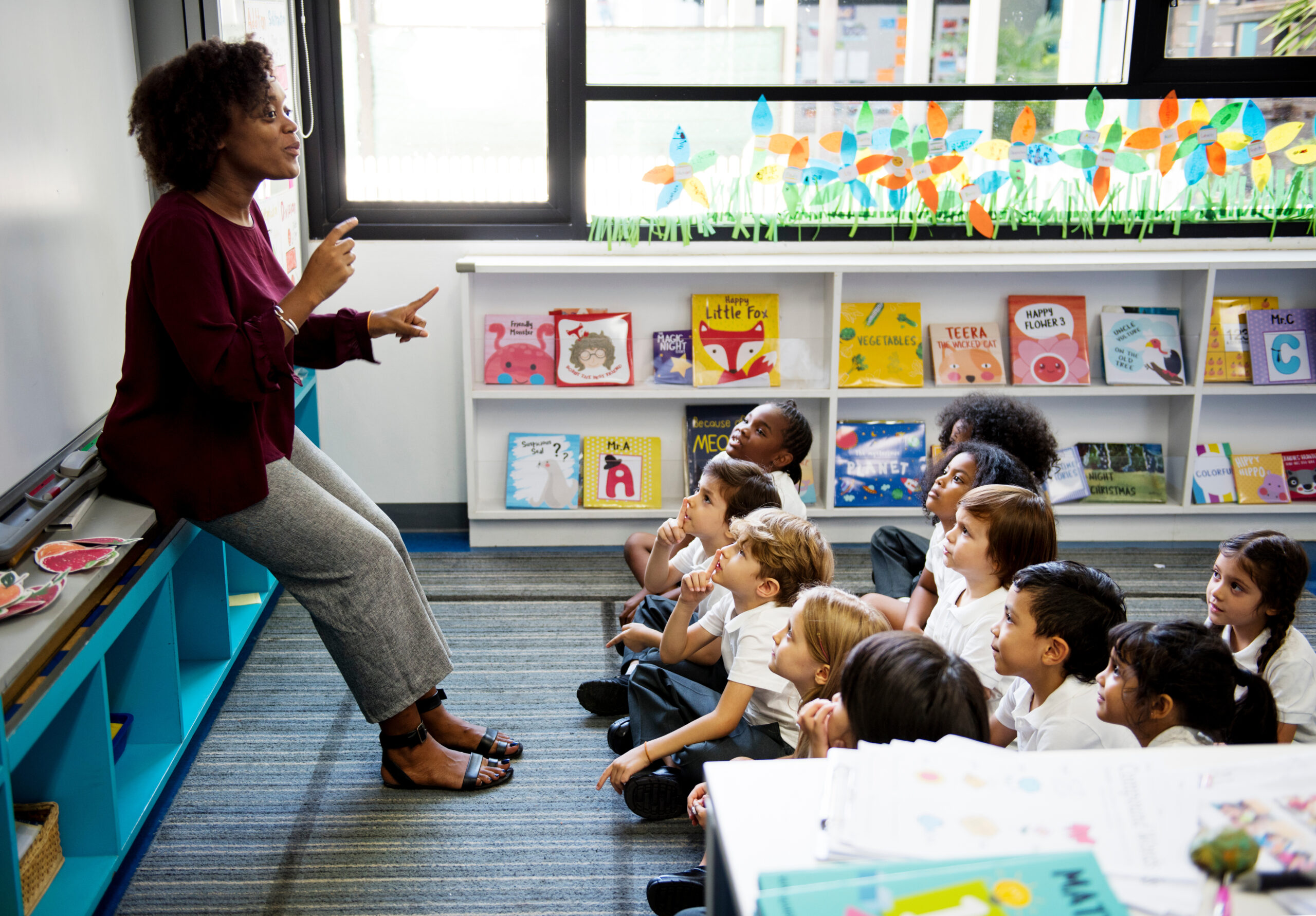Abortion rights, women of color, and LGBTQIA+ people are under attack. Pledge to join us in fighting for gender justice.
Teachers Cannot Teach Your Children Without Having Care for Their Own

I was raised by two public school teachers.
For the first few years of my life, my moms worked opposite schedules to take care of me, and later my brother. One worked during the day, classroom teaching at a public elementary school, and then came home to take care of me at night. My other mom quit her job as a classroom teacher so she could take care of me during the day and then played salsa gigs until three or four a.m. on weeknights and processionals for Chinese funerals on weekends.
But once both of my parents started teaching full time again—a job that is theoretically 8-4 but actually 7-6—I spent a lot of time in the care of others.
At first, that meant a preschool run out of the basement of the local Quaker church and a neighborhood nanny share. Then, a rotating cast of odd babysitters, who I remember for their peculiar quirks: an obsession with Denny’s, a portable chess board brought everywhere, and the mediocre driving that caused the one and only (minor) car crash I’ve ever been in.
On days when my parents couldn’t find a babysitter, friends’ parents with more flexible schedules would pick me up, taking me to their houses or carpooling to extracurricular activities. Later on, I would ride the bus for half an hour to get to an underfunded city afterschool program run out of a public park. I would spend every sunny afternoon, no matter how cold, sitting on the bench reading a book and avoiding games of capture the flag. While many of my friends would leave the program at 4 or 5 p.m., my brother and I were always there until 6, when it closed.
When I was 5, the same year that one of my moms went back to classroom teaching, the other started night school to become certified as a principal. By the time I was 7, she had gotten her first job as a principal, and my other mom had taken on the time-consuming task of running our city high school’s jazz band program, so my brother and I would sometimes only see our parents in the mornings on the way to school.
I don’t begrudge my moms and their careers. They’re an inspiration to me because they showed me that women can be strong, independent, and incredibly passionate about jobs that do good for the world. And yet, the patchwork care my brother and I experienced as children of educators serves as the perfect example of the failures of our current child care system.
While teachers are a highly educated and essential class of worker, they are historically low paid, and expected to work long hours of invisible labor, because the workforce has historically been majority women. These factors make it hard for teachers to maintain both careers and home lives, particularly when they are expected to contribute 110% of their energy to both endeavors. Teachers need care that covers non-traditional hours and the summer, as well as care that is easy to access, yet they often make too much money to qualify for child care subsidies, but too little to be able to afford high quality child care.
My parents both love teaching, and teachers are vital to our economy and our society, but teachers cannot teach your children without having care for their own.
The problems that my parents faced are not unique to the educator workforce. In fact, for many families working one or multiple low-paid jobs, these struggles can be even harder to overcome. Many parents who work long hours are forced to quit jobs because they cannot access or afford care that meets their needs. Those who can find care often pay more money than they can afford, but less than caretakers need to sustain their own families.
Under our current system, no one is thriving. Child care is the work that makes all other work possible, yet it is underfunded and undervalued. During the pandemic, Congress extended the child care system a lifeline that saved the sector from collapse. But now we’re a few short weeks away from a significant portion of that funding expiring: This means child care workers who saw modest wage growth or bonuses under the American Rescue Plan are at risk of that progress being erased and millions of children could lose their child care.
As we approach that child care cliff in September, it is vital that lawmakers not only sustain child care funding, but create bold new investments in child care to support both our current workforce, and the workforce of our future, who are, as we speak, being mentored by our too often invisible, but always essential, teachers. Join me in urging Congress to prioritize funding and solutions to the ongoing child care crisis to support children, families, and workers everywhere.
By Maize Cline, Former NWLC Intern




